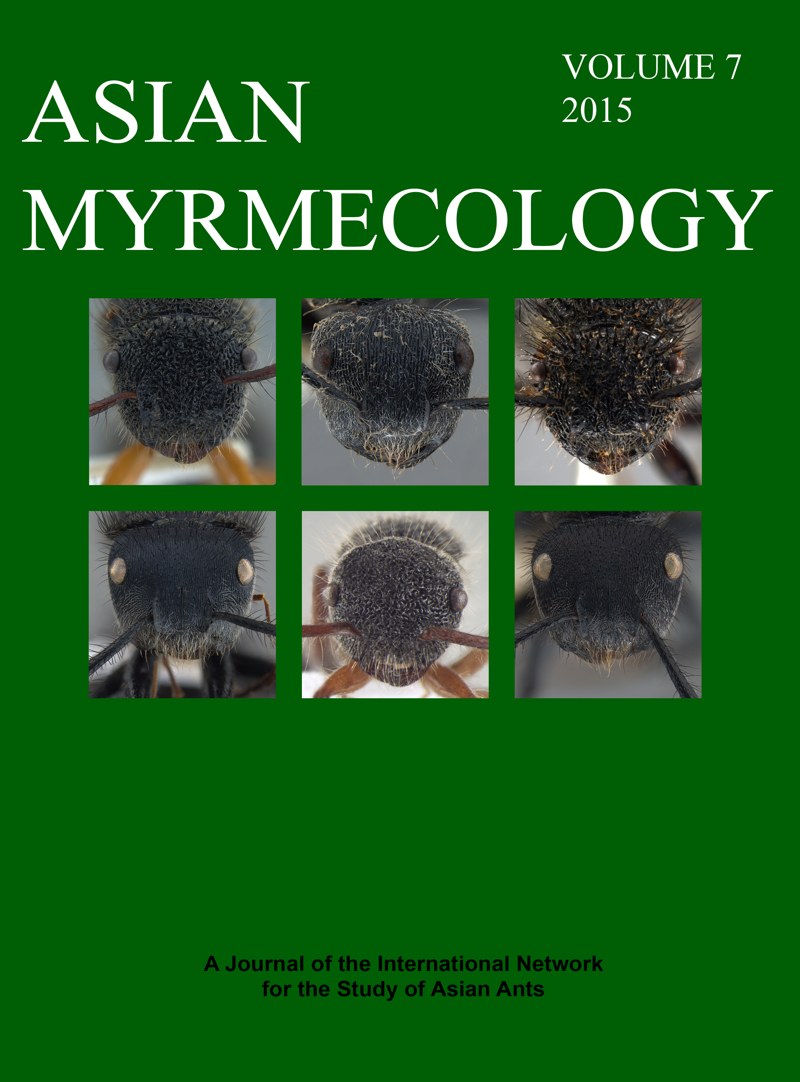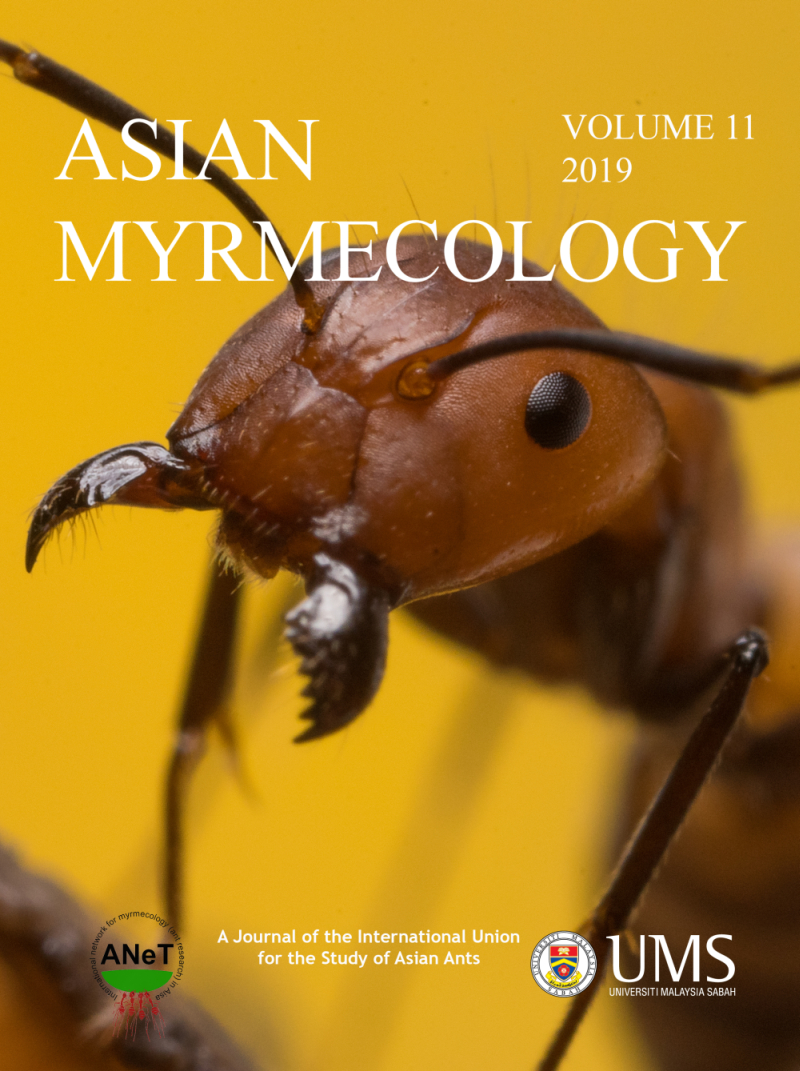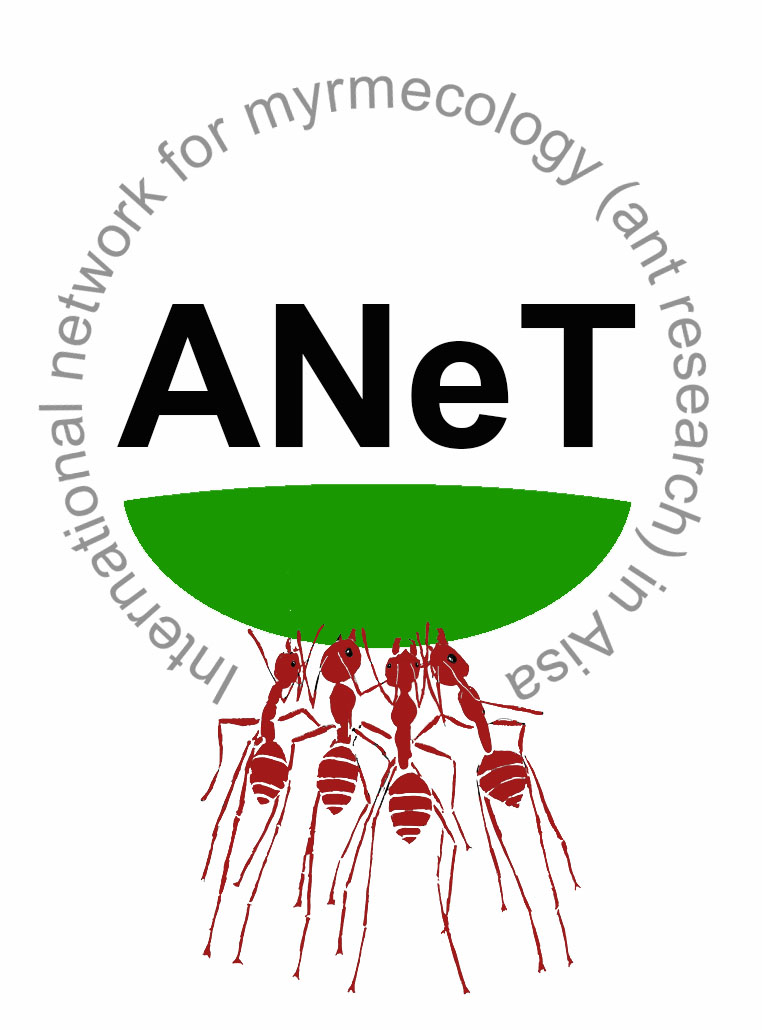ASIAN
MYRMECOLOGY
Image: François Brassard
Life History
Asian Myrmecology, Volume 7, pages 137-141, published August 2015
DOI: 10.20362/am.007014
Queen and male longevity in the Southeast Asian ant Cardiocondyla tjibodana Karavaiev, 1935
MARION FUESSL, JÜRGEN HEINZE & ALEXANDRA SCHREMPF*
Abstract:
Many species of the ant genus Cardiocondyla are characterized by a bizarre polyphenism with winged disperser males and wingless males that engage in lethal fighting for access to nestmate queens. In C. obscurior, winged males have a stronger life-prolonging and fecundity-enhancing effect for their female mates than wingless males. Here we examine whether the same is true for males of the southeast Asian C. tjibodana. Male phene did not have an effect on queen life expectancy and fecundity. Like the queens of other Cardiocondyla species, C. tjibodana queens were relatively short-lived, with a maximum lifespan of 273 days. Males of both phenotypes survived for a median of 25 days, with one wingless male reaching an age of 194 days. Data from additional species of Cardiocondyla are needed to determine how life expectancy of males and queens and the male influence on queen traits have evolved in this genus.
Keywords:
life history trade-off, male polyphenism, longevity
Get PDF (516K):
Biologie I, Universität Regensburg, D-93040 Regensburg, Germany
*Corresponding author: alexandra.schrempf@ur.de



